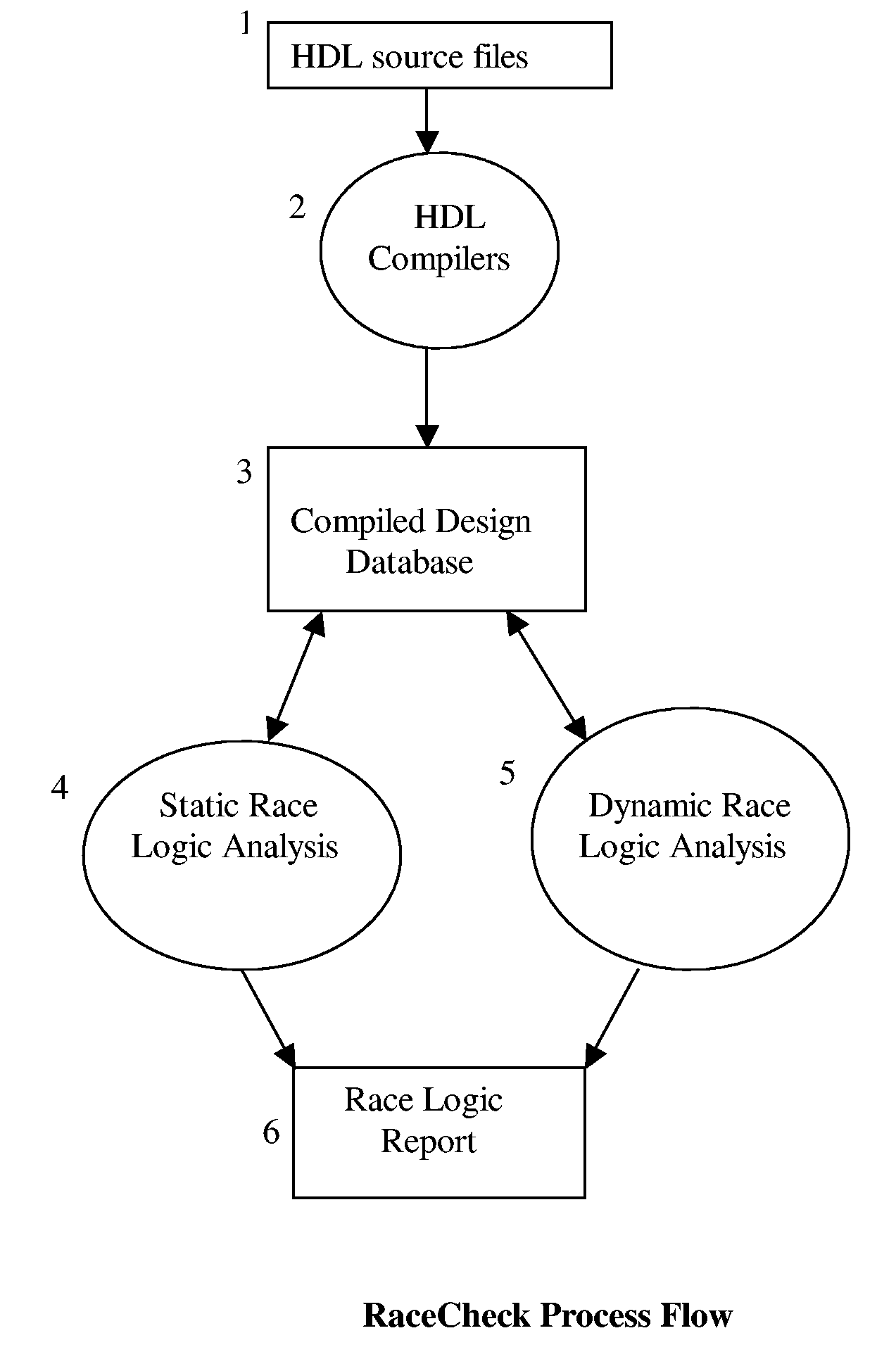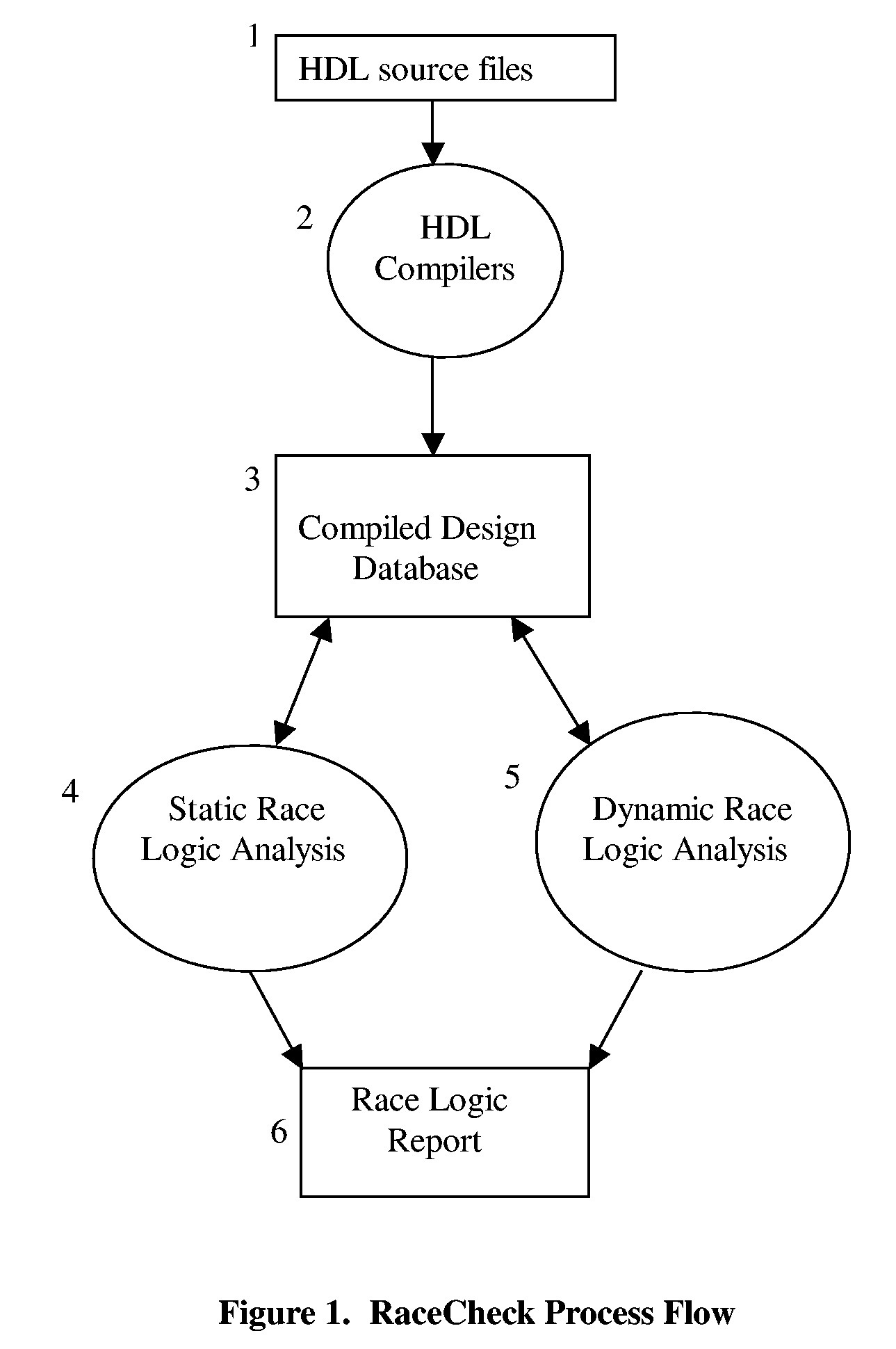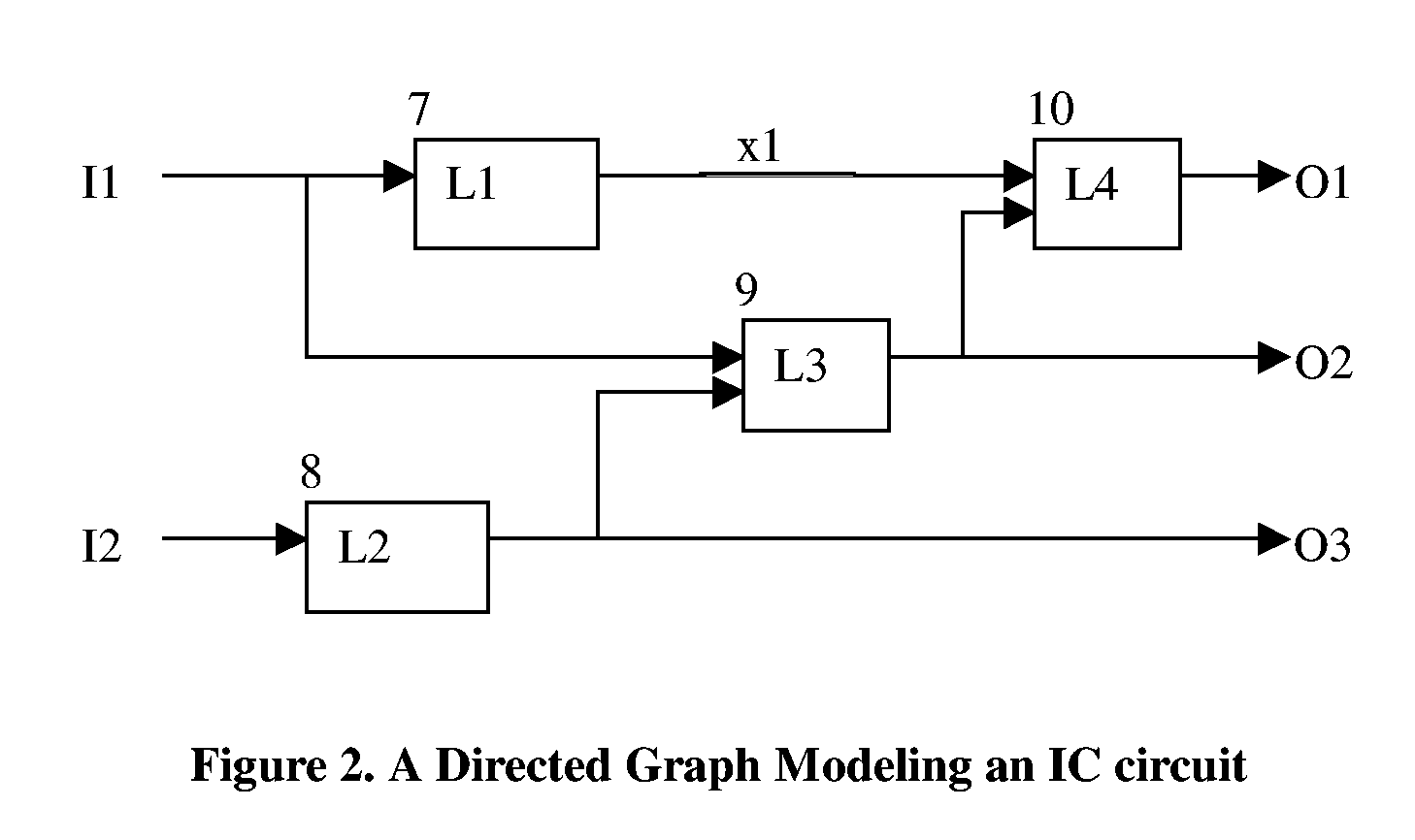RaceCheck: a race logic analyzer program for digital integrated circuits
a race logic and analyzer technology, applied in program control, instruments, design optimisation/simulation, etc., can solve problems such as not timing correctness, mask race logic effects, and give users a false sense of confidence in the overall test coverage of their test benches
- Summary
- Abstract
- Description
- Claims
- Application Information
AI Technical Summary
Benefits of technology
Problems solved by technology
Method used
Image
Examples
Embodiment Construction
[0055]As defined in Section I, race logic is any circuit construct that may behave unpredictably when it is executed in different orders. This invention will depict new technologies that will reveal hard-to-detect race logic, which is not covered by the current HDL design verification tools.
[0056]Specifically, the invention technologies will uncover the following types of race logic:[0057]Concurrent assignment to the same circuit signals in a CUT[0058]Concurrent assignment and reference of signals in a CUT[0059]Concurrent invocation of user-defined tasks or functions which may lead to concurrent assignment or concurrent assignment and reference of one or more signals in a CUT[0060]Concurrent invocation of the Verilog and SystemVerilog $random system function[0061]Zero-delay combinational logic loops in a CUT
[0062]Furthermore, all the above checking can be done statically and / or dynamically.
[0063]The process flow of the RaceCheck program to perform static and dynamic race logic analy...
PUM
 Login to View More
Login to View More Abstract
Description
Claims
Application Information
 Login to View More
Login to View More - R&D
- Intellectual Property
- Life Sciences
- Materials
- Tech Scout
- Unparalleled Data Quality
- Higher Quality Content
- 60% Fewer Hallucinations
Browse by: Latest US Patents, China's latest patents, Technical Efficacy Thesaurus, Application Domain, Technology Topic, Popular Technical Reports.
© 2025 PatSnap. All rights reserved.Legal|Privacy policy|Modern Slavery Act Transparency Statement|Sitemap|About US| Contact US: help@patsnap.com



